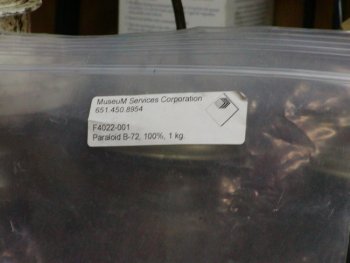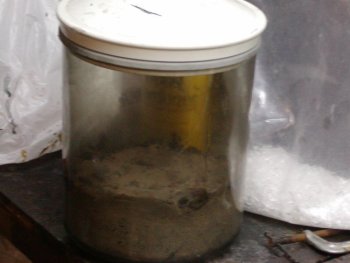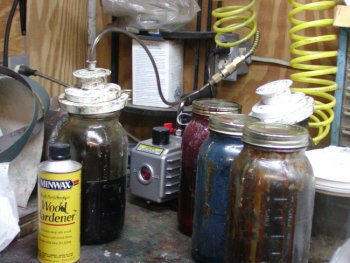Meridian Blades
Moderator - Knife Maker
I guess I will throw my 2 cents out there too. This is just my opinion, but....
The wood hardener will turn white. I know this from first hand experience, and I ruined some really nice stuff using it. (see Amboyna burl)
I have heard really bad things about Nelsonite (smell is terrible and doesnt go away, wood doesnt get hard, etc) but I have never used it.
I have some Res 90 but havent used it yet, heard mixed results but to me it was expensive !!!!!.....
I have a vac tank that does pressure too, but I use it for casting and send all my wood out. Originally I had tried the B72 with xylene and acetone, and had mixed results.
One thing to remember is that its dangerous, these chemicals are bad in general and your time is worth something !!!!, plus the equipment to do it. Oven, chemicals, wrapping supplies, moisture meter etc.......If you do the math to me it seems like it would be spendy. I think its money well spent to have the pros do it, and have the peace of mind knowing that it was done professionally. Penetration is 100% through the block, and thats the most important thing, but also you don't want the stabilizer to be too brittle, so your handle cracks when the blade gets dropped, and yet it should'nt gum up your belts either cuz its too soft.
For my stabilizing service I use WSSI exclusively, I do a lot of box elder and I like the double dye WSSI has, but I would also go with K & G.
Soak your stuff thats stabilized in a bucket of water overnight......then set it on the work bench to dry. Check your results.
In the end, stabilizing helps but its no guarantee that the wood won't move, etc.....
Anyways.....this is just my experience, and your mileage may (and probably will) vary.....2thumbs
Larry
The wood hardener will turn white. I know this from first hand experience, and I ruined some really nice stuff using it. (see Amboyna burl)
I have heard really bad things about Nelsonite (smell is terrible and doesnt go away, wood doesnt get hard, etc) but I have never used it.
I have some Res 90 but havent used it yet, heard mixed results but to me it was expensive !!!!!.....
I have a vac tank that does pressure too, but I use it for casting and send all my wood out. Originally I had tried the B72 with xylene and acetone, and had mixed results.
One thing to remember is that its dangerous, these chemicals are bad in general and your time is worth something !!!!, plus the equipment to do it. Oven, chemicals, wrapping supplies, moisture meter etc.......If you do the math to me it seems like it would be spendy. I think its money well spent to have the pros do it, and have the peace of mind knowing that it was done professionally. Penetration is 100% through the block, and thats the most important thing, but also you don't want the stabilizer to be too brittle, so your handle cracks when the blade gets dropped, and yet it should'nt gum up your belts either cuz its too soft.
For my stabilizing service I use WSSI exclusively, I do a lot of box elder and I like the double dye WSSI has, but I would also go with K & G.
Soak your stuff thats stabilized in a bucket of water overnight......then set it on the work bench to dry. Check your results.
In the end, stabilizing helps but its no guarantee that the wood won't move, etc.....
Anyways.....this is just my experience, and your mileage may (and probably will) vary.....2thumbs
Larry
Last edited:



